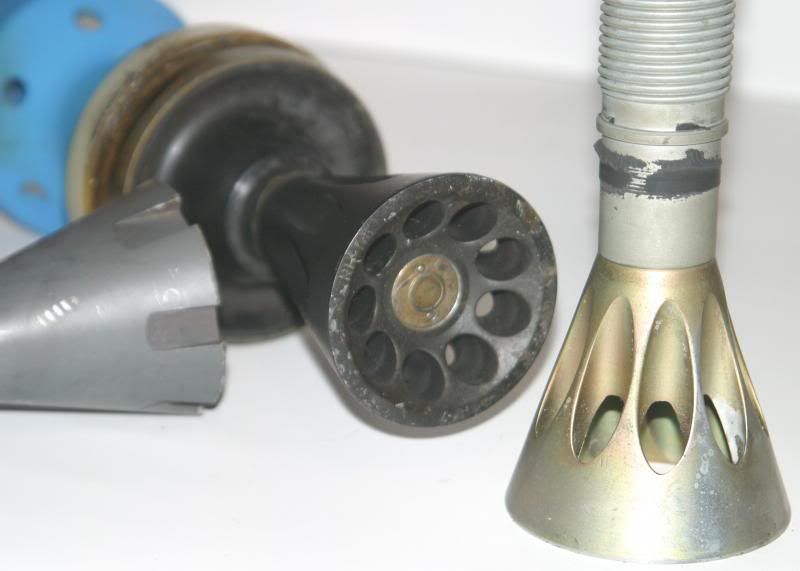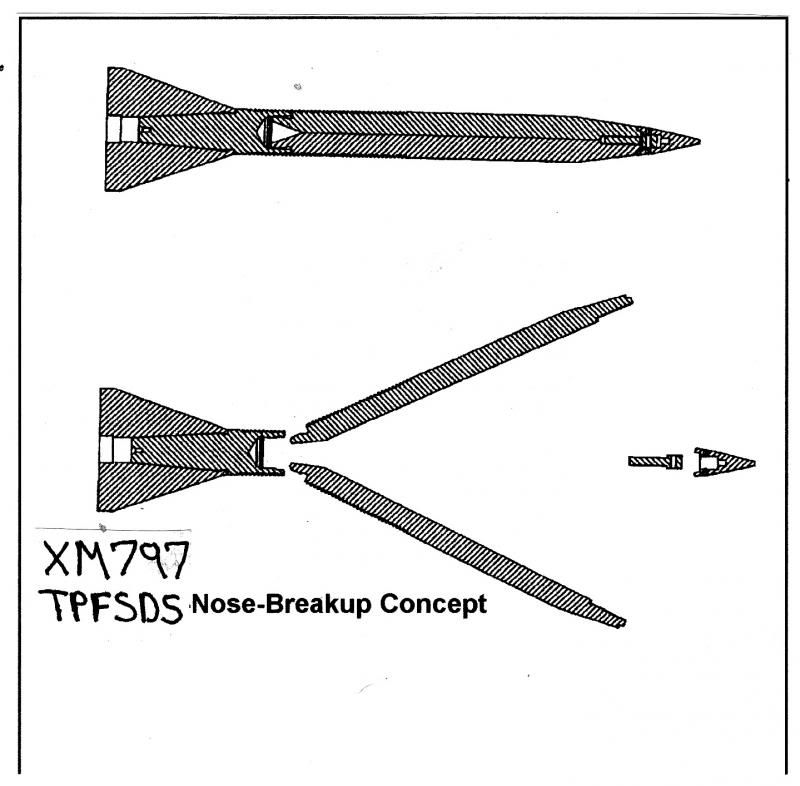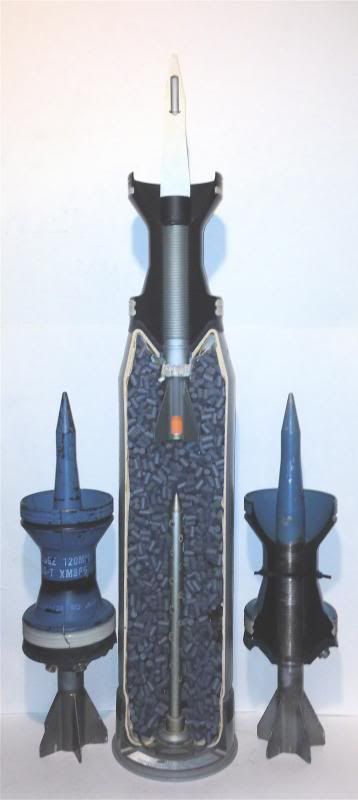Posting some photos of two US 120MM XM866 TPFSDS-T inert projectiles. To the best of my knowledge, this target practice round and its tactical counterpart, the XM827 APFSDS-T, were created for temporary use until the M865 TPCSDS-T and M829 APFSDS-T rounds finished undergoing R&D to be type classified. The XM866 and XM827 were not used very long.
Jason
A sectioned & non-sectioned example of the XM866 TPFSDS-T projectile.
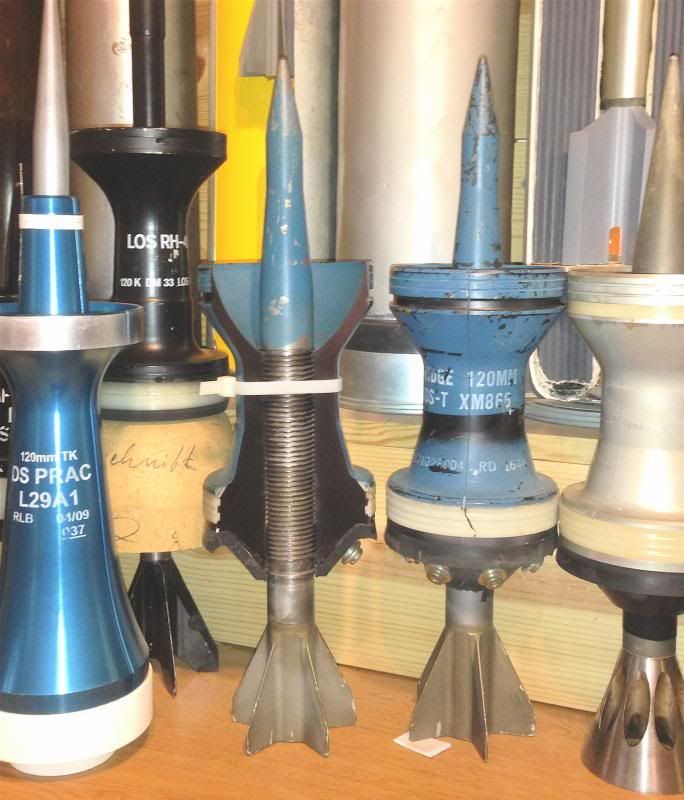
LEFT TO RIGHT: Sectioned XM866, Non-Sectioned XM866 (appear to use an almost identical sabot used on the German DM38 / US M865), German DM38 TPCSDS-T, Ported Cone Stabilized early MOD M865 copied from the German DM38, Grooved Cone Stabilized M865, Current Grooved Cone Stabilized M865)
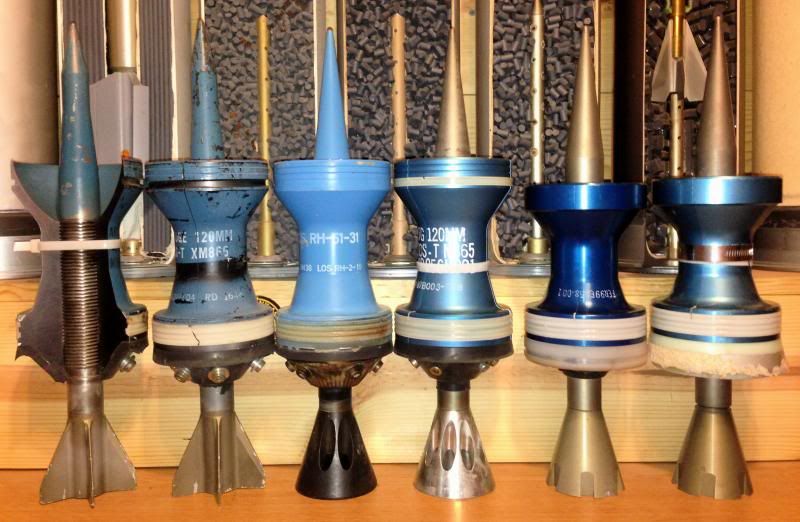
Jason
A sectioned & non-sectioned example of the XM866 TPFSDS-T projectile.

LEFT TO RIGHT: Sectioned XM866, Non-Sectioned XM866 (appear to use an almost identical sabot used on the German DM38 / US M865), German DM38 TPCSDS-T, Ported Cone Stabilized early MOD M865 copied from the German DM38, Grooved Cone Stabilized M865, Current Grooved Cone Stabilized M865)

Attachments
Last edited by a moderator:



